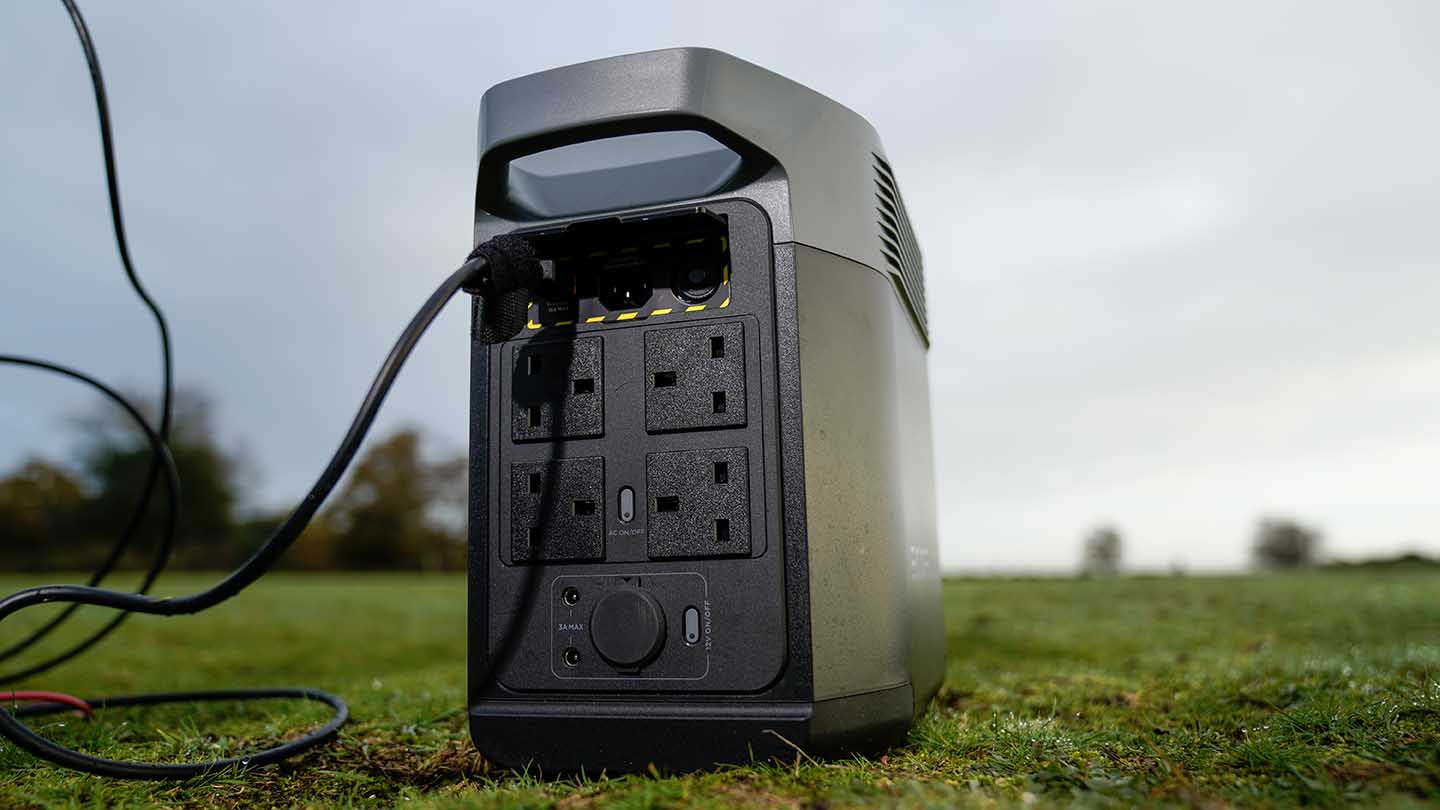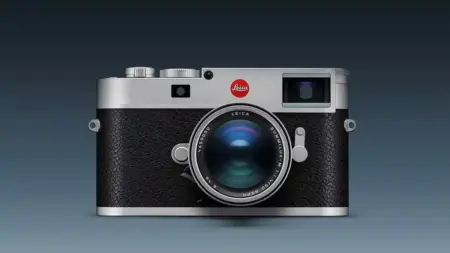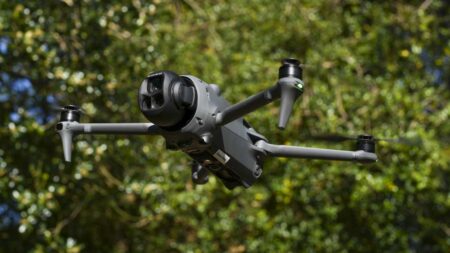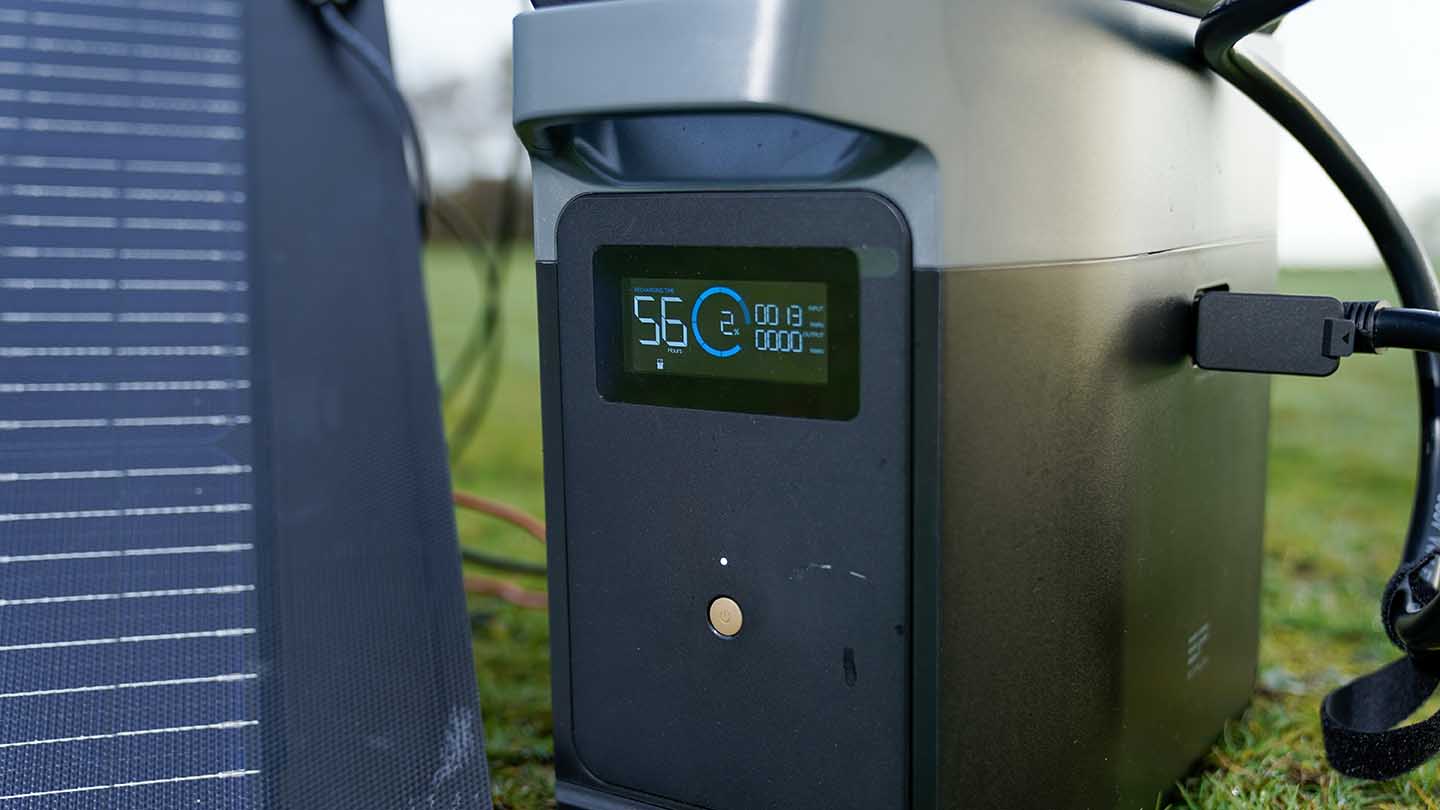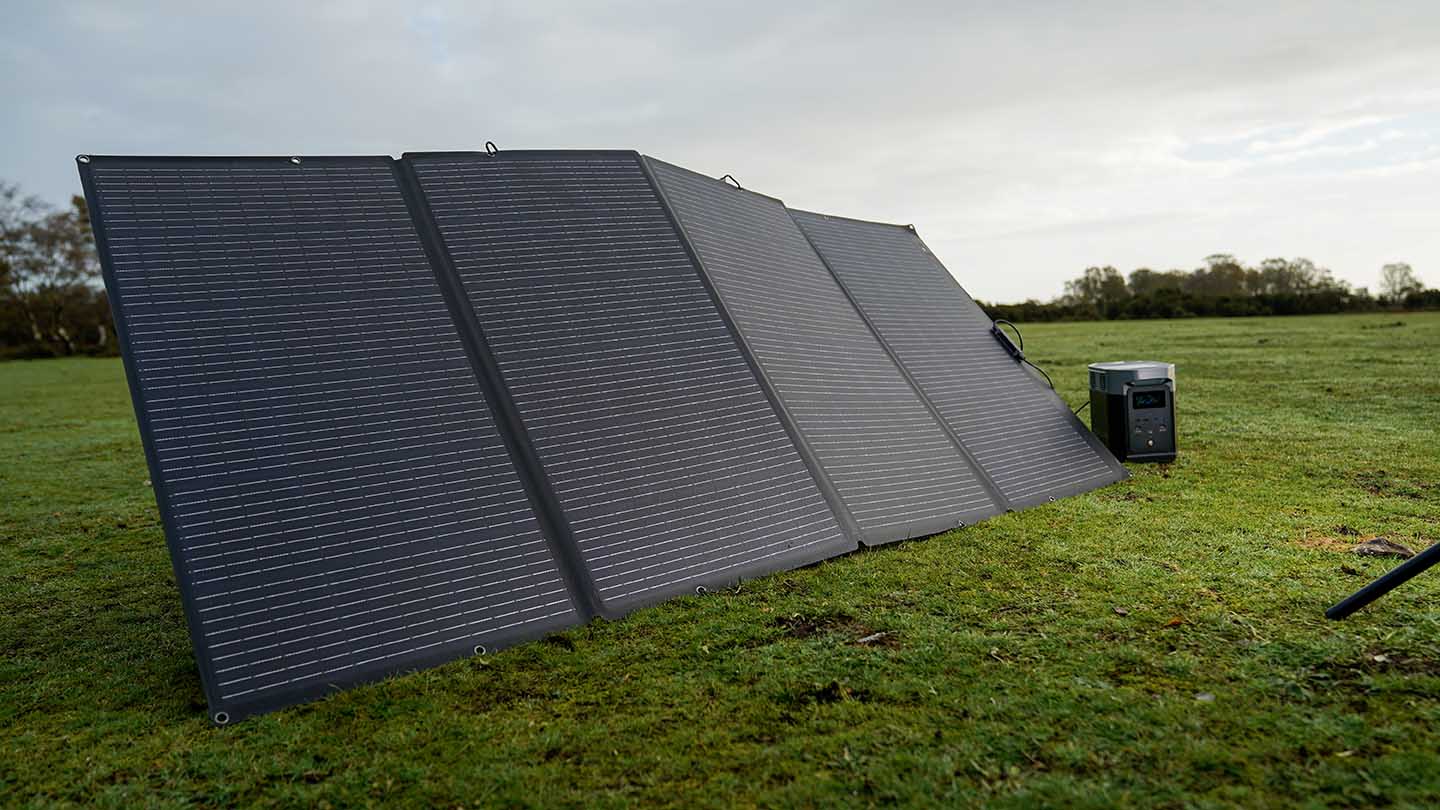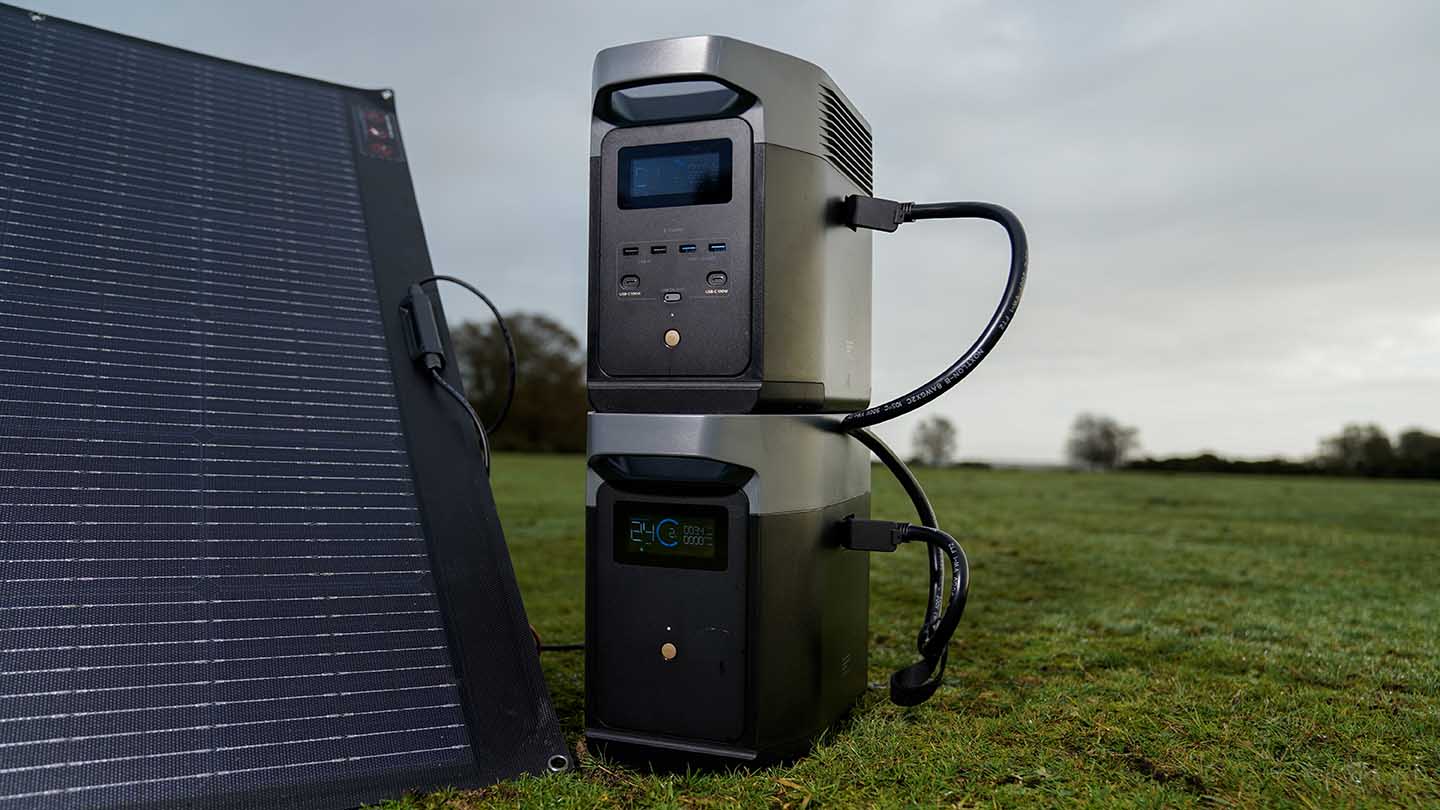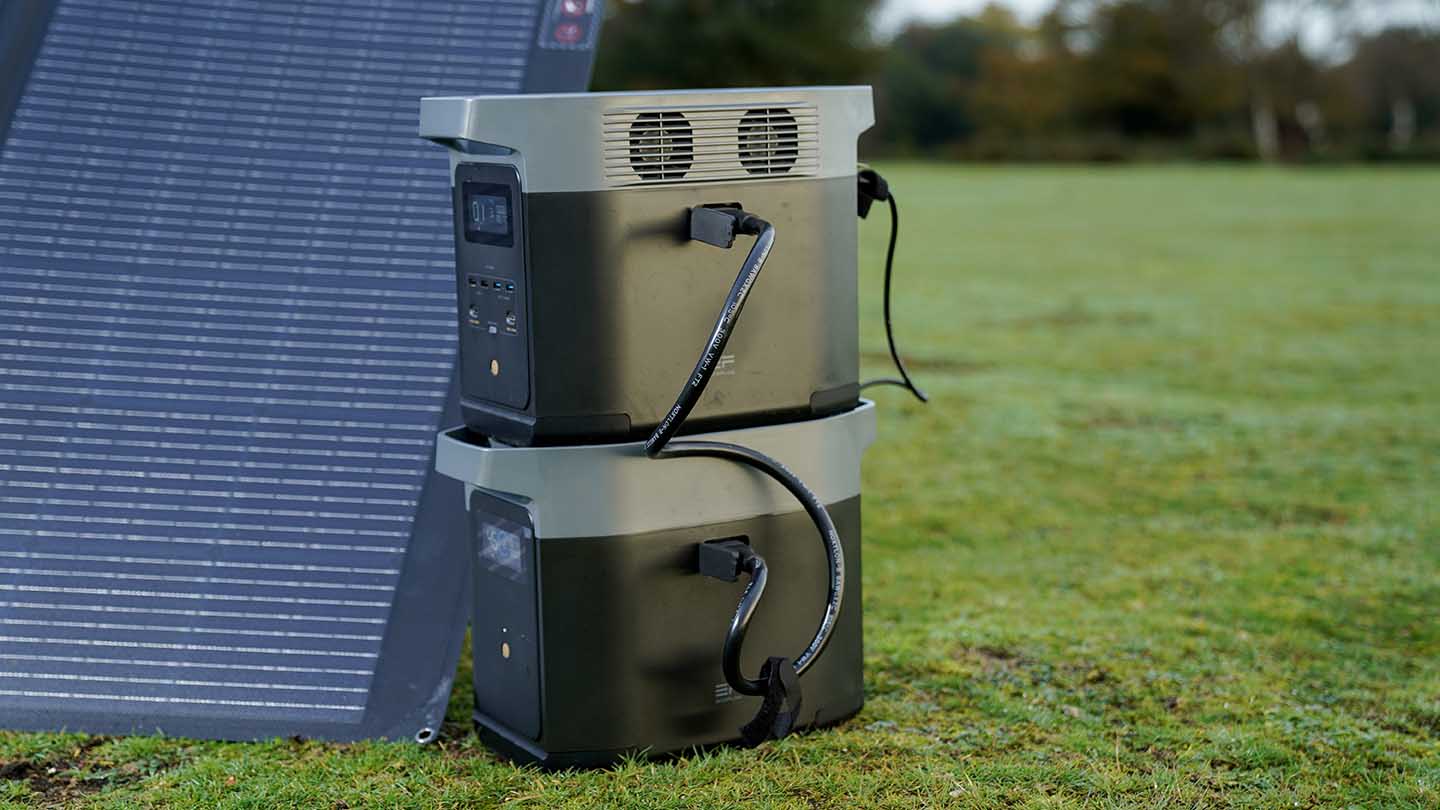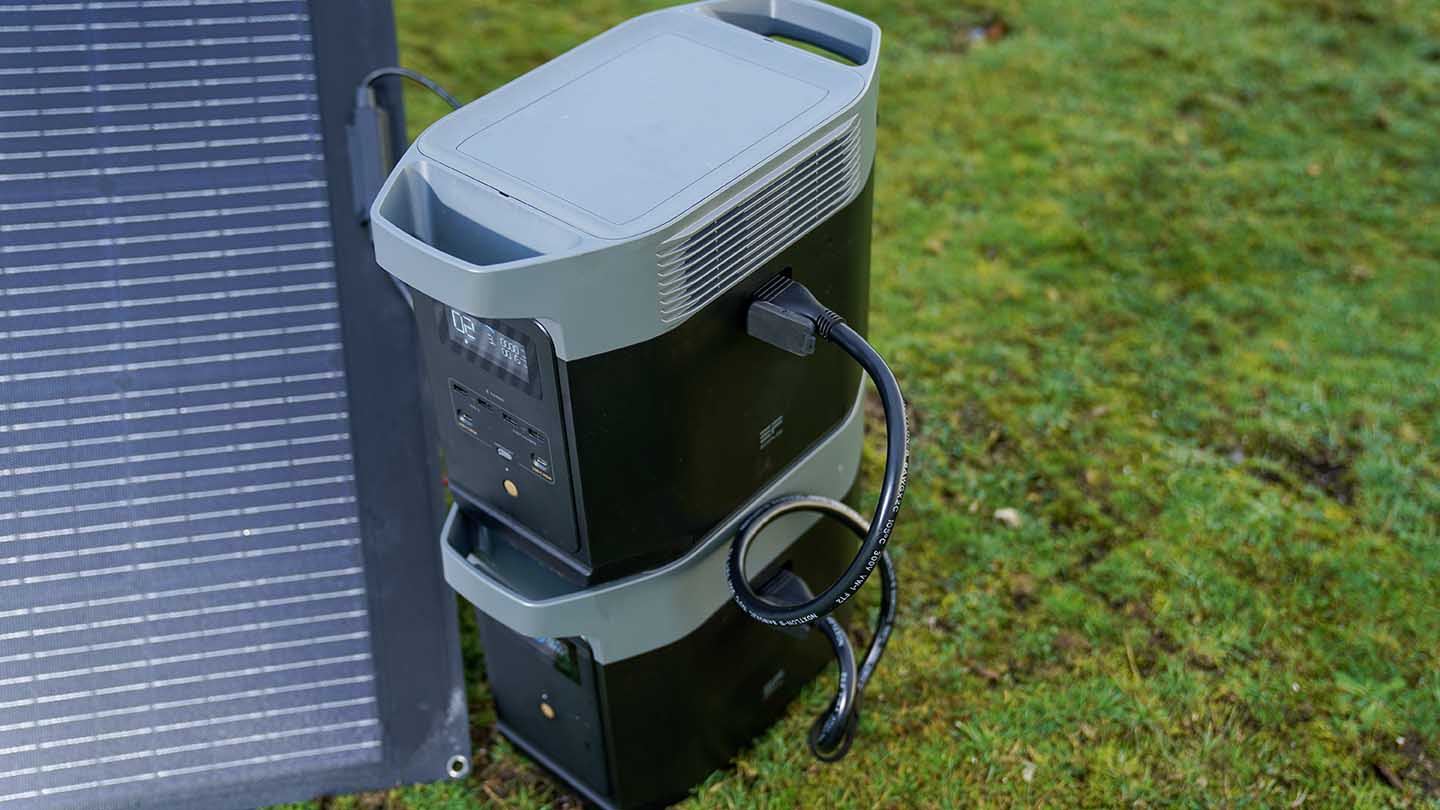Before starting with the Delta 2 and the 1kWh expansion battery, I charged both with the 400w solar panel. Setting up the Delta 2 and expansion battery was easy enough, with one sitting on the other and connecting using the link cable. Once done, the system was ready to go.
The next step was to connect the solar panel. Before doing this, the panel had to be removed from the material carry case. The case is of high quality and offers a good amount of protection for the panel. The panel is large at 105.8×236.5×2.5cm when opened up and weighing in at 19kg, so it isn’t easy to handle. Whereas other panels have a simple fold-down leg, EcoFlow has continued to use the clip-on support design with their smaller systems. While it’s OK with the smaller systems at this size, it’s quite difficult to set up on your own – some help is recommended.
With the 400W panel connected, the charging speed is impressive, with both units reaching a complete charge on one sunny late summer day, around 10 hours. That’s essentially 1.7kWh of power collected from about a 15%-20% starting point.
Away from solar, the Delta 2 is sold as an extremely quick to charge through the mains. In this test, I wasn’t quite prepared for the speed at which the pack topped itself up. From 5%, lower than you should let these packs go, the fans kicked in, and less than an hour later, the pack was almost at 100%. The speed of the charge outstripped any other battery that I have looked at. While the pack charged quickly, it also lets you know that it was working hard; while it didn’t grunt with the strain, it may as well have been well done; the fans kicked into life almost immediately and didn’t rest until the charge had finished. The performance was impressive, and with the on-device screen or through the App, you can monitor how the charge is going. The input reaches around 1300W.
The final charging option is through the cig socket in your car or the one now labelled with 12v. Through this socket, it takes around 110w and about a 10-hour drive to fully top up the battery.
Getting power into the battery is easy, and getting that power back out and into your devices is equally easy.
There are limits, as I have found with previous devices, but the 2700w surge protection and X-Boost does give some devices a little more of a head room to settle down than other 1kWh units. However, an iron to smooth out backdrops was still a bit too much of a push, as was using the vacuum to give the location a good clean before the shoot. A brush and dustpan and brush supplemented as an unsatisfactory stand-in.
Domestics out of the way, and it was time to get set up and powered up. Using an old Mac Pro for the on-site machine connected to a 27-inch BenQ monitor, instantly 350W of power was gone, then the monitor speakers took another 60W, the AC sockets were all gone, and an extension cable was fitted.
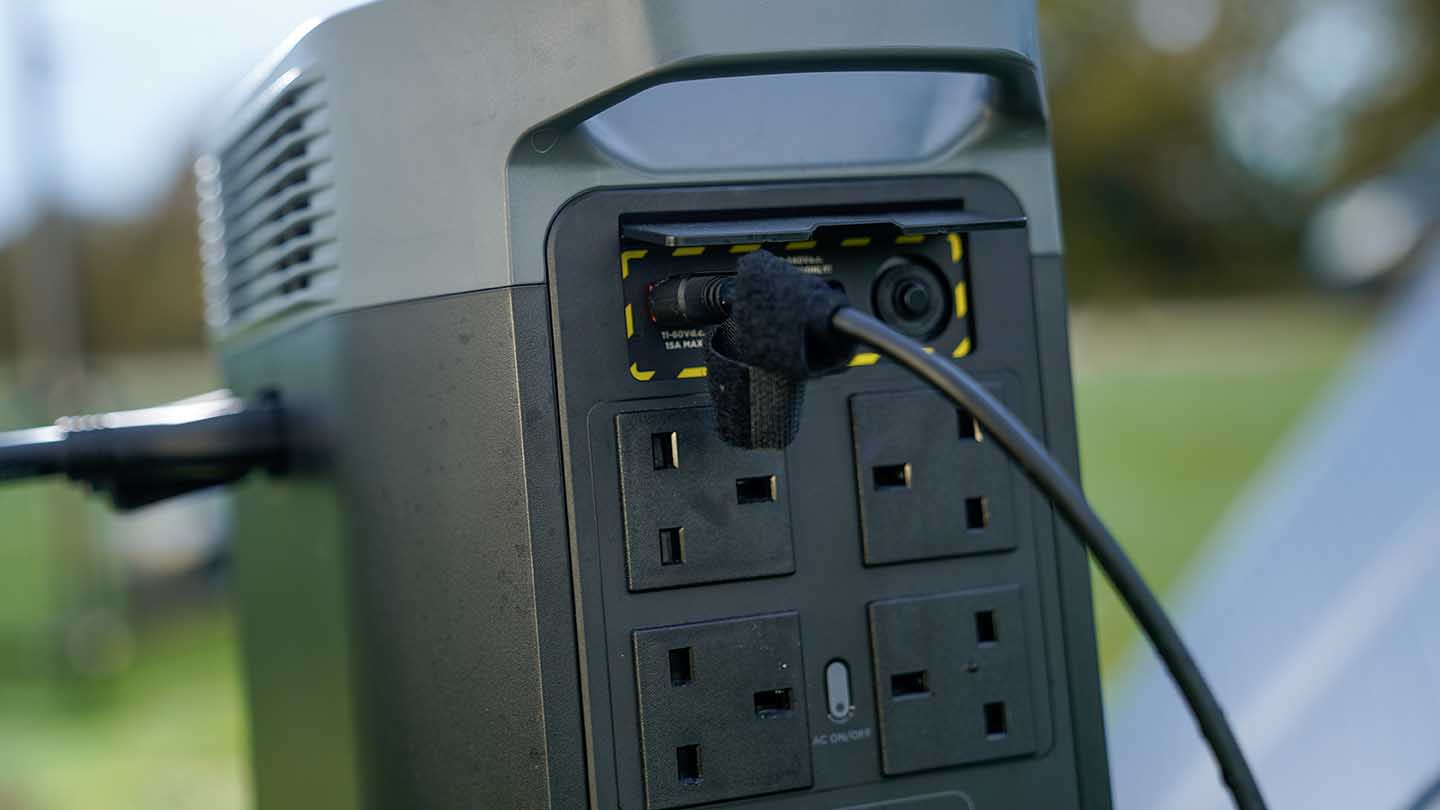
With the cable in place, the Canon EOS R5 C was connected along with two Rotolight Anovas, a charging bank for batteries, and phones.
The small Delta was easily handling 1200w without any issue, the occasional kick-in of the fans but nothing too much. With one battery connected, the time on the Delta read 42 minutes. Adding the additional battery instantly increased the time with the two units splitting the power draw between them rather than one draining and then the other.
To boost the system, I plugged in the panel, which was feeding in 220W of solar power and balancing some of the output. As the shoot went on, the use of the computer varied, which was the major drain on the system. In the end, the shoot lasted for around four hours, and there was plenty of space for at least another hour of battery. Again teas and coffees were made on the Jetboil as the kettle was over the power draw limit, I have now found a 1kWh camping kettle which looks like an essential.
